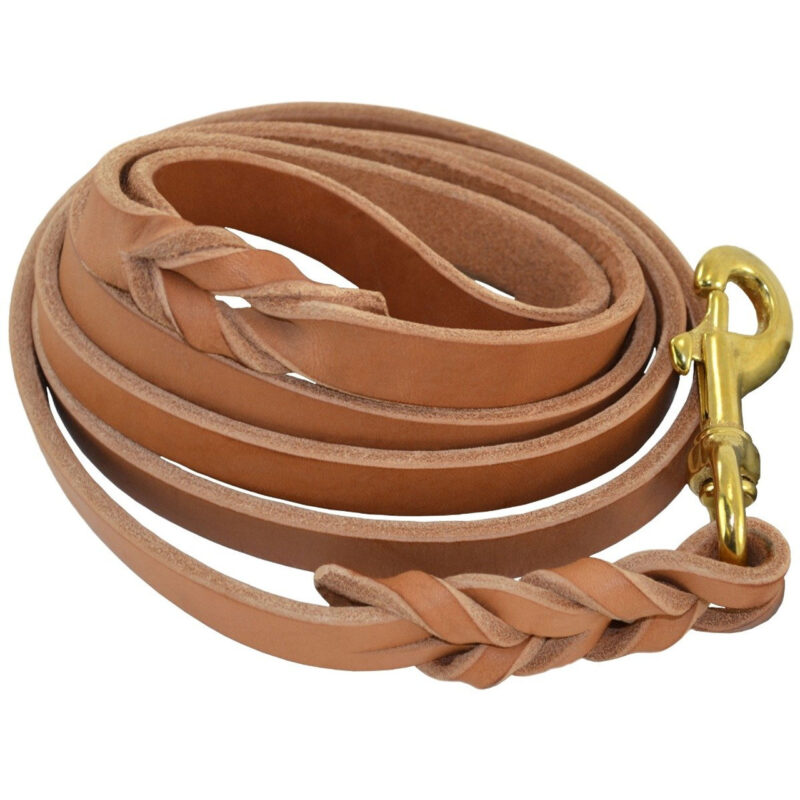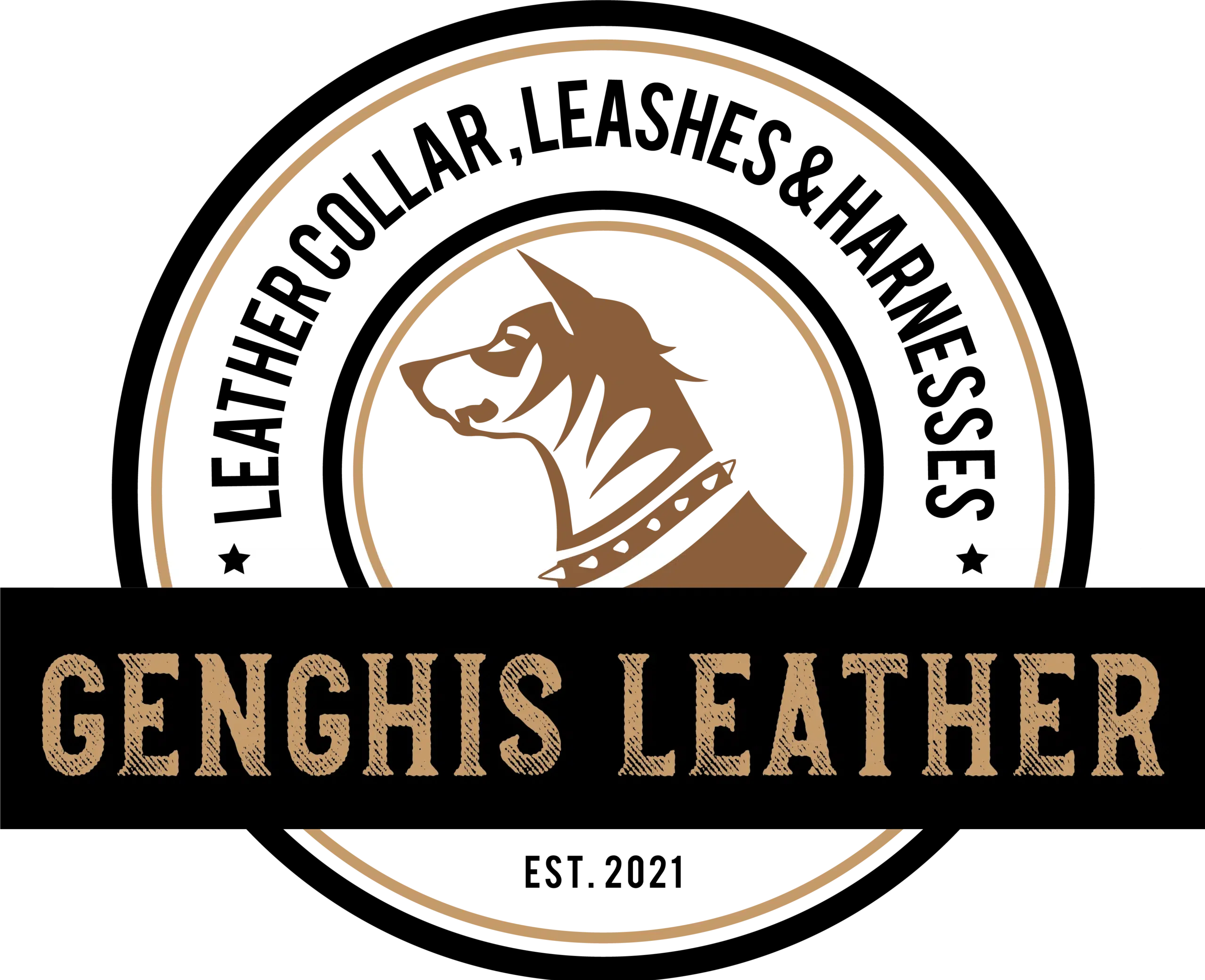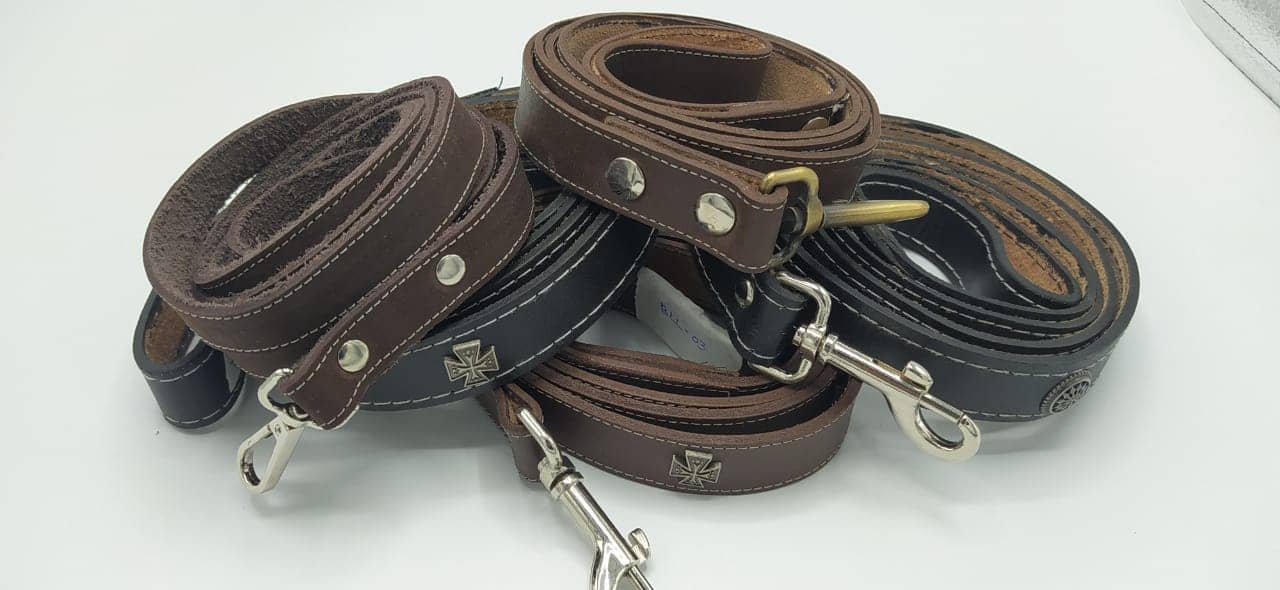Dog Leash Lengths: How to Choose the Perfect Size for Your Pup ( 2024 )
Have you ever wondered if you’re using the right leash for your furry friend? Dog leashes come in various lengths, each serving a unique purpose. We’ll explore the different sizes available and help you choose…
Have you ever wondered if you’re using the right leash for your furry friend? Dog leashes come in various lengths, each serving a unique purpose. We’ll explore the different sizes available and help you choose the perfect one for your pup.
Standard dog leashes typically measure around 6 feet (1.8 meters), but options range from short leads to long lines. The ideal length depends on factors like your dog’s size, breed, training level, and walking environment. Understanding these elements is crucial for selecting a leash that meets both your and your dog’s needs. We’ll jump into the pros and cons of different leash lengths and provide tips on when to use each type, ensuring your walks are safe and enjoyable for everyone involved.
Understanding Dog Leash Lengths
Standard Leash Length
The most common dog leash length is between 4 to 6 feet. This standard size offers an ideal balance of control and freedom for most dogs and their owners. A 6-foot leash allows dogs to explore their surroundings while keeping them close enough for safety in various environments.
Types of Leashes and Their Lengths
Different leash lengths serve various purposes:
- Short Leashes (1-3 feet): Perfect for crowded areas or dogs needing close supervision
- Standard Leashes (4-6 feet): Suitable for everyday walks and basic training
- Long Leashes (10-30+ feet): Used for training, recall practice, or supervised freedom in open spaces
Factors Influencing Leash Length Choice
When selecting a leash length, consider:
- Dog’s Size: Larger dogs may require longer leashes for comfort
- Behavior: Well-trained dogs might handle longer leashes, while reactive dogs benefit from shorter ones
- Environment: Urban settings call for shorter leashes, while parks allow for longer ones
- Training Goals: Longer leashes aid in recall training, shorter ones in heel work
Material and Width Considerations
Leash material and width affect functionality:
- Nylon: Durable and affordable
- Leather: Classic look, comfortable grip
- Rope: Strong and often used for longer leads
Width typically ranges from 1/4 inch to 3/4 inch, with thicker leashes suitable for stronger dogs.
Specialized Leash Types
Some specialized leash options include:
- Retractable Leashes: Adjustable length, but require careful use
- Traffic Leashes: Very short for quick control in high-risk situations
- Hands-Free Leashes: Attach to waist for running or hands-occupied activities
By understanding these leash length variations, we can choose the most appropriate option for our dogs’ needs, ensuring safe and enjoyable walks for both pets and owners.

Standard Leash Lengths
Standard leash lengths vary to accommodate different dog sizes and walking environments. We’ll explore the most common leash lengths and their exact uses.
4-Foot Leashes
4-foot leashes offer enhanced control and are ideal for training situations. These shorter leashes keep dogs close, making them perfect for crowded areas or when working on obedience skills. They’re particularly useful for:
- Teaching loose-leash walking
- Handling busy sidewalks or streets
- Managing reactive dogs
- Practicing heel commands
While 4-foot leashes provide excellent control, they may limit a dog’s freedom to explore during casual walks. But, their compact size makes them easy to store and handle, especially for smaller dog breeds or in tight spaces.
6-Foot Leashes
6-foot leashes are the most common and versatile option for everyday walks. This standard length strikes a balance between control and freedom, allowing dogs to explore while keeping them within reach. Benefits of 6-foot leashes include:
- Suitable for most walking environments
- Provides enough length for sniffing and exploring
- Allows for easy control in various situations
- Comfortable distance between handler and dog
Many 6-foot leashes feature a “traffic handle” located 12-18 inches from the clip end, offering quick control in high-traffic areas. This length is generally recommended for neighborhood walks and less crowded spaces, accommodating a wide range of dog sizes and breeds.
8-Foot and Longer Leashes
Leashes 8 feet and longer provide dogs with more freedom to roam and explore. These extended leashes are beneficial for:
- Large, well-behaved dogs
- Open areas with minimal traffic
- Training recall commands
- Allowing dogs to exercise and play while still maintaining control
Longer leashes, such as 15-foot or 30-foot options, are often used for off-leash training in controlled environments. They give dogs a sense of freedom while allowing handlers to maintain control and work on distance commands. But, these leashes require more skill to manage and may not be suitable for crowded areas or untrained dogs.
Factors Influencing Leash Length Choice
Several key factors influence the choice of dog leash length. We’ll explore how dog size and breed, training purposes, and the environment all play crucial roles in determining the ideal leash length for your canine companion.
Dog Size and Breed
Dog size and breed significantly impact leash length selection. For most dogs, a standard leash length of 4 to 6 feet provides an optimal balance between freedom and control. Larger or more energetic breeds often require additional features like traffic handles or heavy-duty leashes to manage their strength and momentum. Smaller dogs may benefit from shorter leashes, allowing for closer supervision and enhanced safety in crowded areas. When choosing a leash, consider your dog’s physical characteristics and temperament to ensure a comfortable and secure walking experience.
Training Purposes
Leash length varies depending on training objectives. Short leashes (1-3 feet) excel in high-traffic areas and during initial leash training stages, offering close control and preventing pulling. These compact leads are ideal for teaching obedience skills and maintaining focus in distracting environments. Standard leashes (4-6 feet) suit general walking and basic training, providing a balance between freedom and control. Longer leashes (10-30+ feet) are valuable for recall practice and off-leash training in open spaces, allowing dogs to explore while remaining under supervision.
Environment and Setting
The walking environment plays a crucial role in determining appropriate leash length. In urban settings with heavy foot traffic, shorter leashes offer better control and safety. Conversely, open areas like parks or hiking trails allow for longer leashes, giving dogs more freedom to explore. Consider potential hazards in the environment, such as traffic, other animals, or obstacles that may require quick control. Adjustable leashes provide versatility, allowing you to adapt to changing environments during walks. Always prioritize safety and local leash laws when selecting the appropriate length for your dog’s outdoor activities.
Leash Widths and Materials
Leash width and material play crucial roles in a dog’s comfort and the owner’s control. We’ll explore how to choose the right width and the most common materials used for dog leashes.
Choosing the Right Width
Leash width selection depends primarily on your dog’s size and strength. For small breeds weighing under 50 pounds, a lightweight, narrow leash of 3/8 inch is suitable. This width prevents overburdening small dogs while providing adequate control. Medium to large dogs over 50 pounds require wider leashes, typically 1/2 inch to 1 inch, for enhanced durability and control. The wider width distributes force more evenly, reducing the risk of the leash breaking under strain from a larger, stronger dog. When selecting a leash width, consider your dog’s pulling habits and your own comfort. A width that feels comfortable in your hand ensures better control during walks.
Common Leash Materials
Dog leashes come in various materials, each with unique properties suited for different needs:
- Nylon: The most popular choice due to its affordability, durability, and wide range of colors and patterns. Nylon leashes are easy to clean and ideal for wet environments. But, they can cause friction burns if a dog pulls strongly.
- Leather: Known for durability and comfort, leather leashes soften over time and are less likely to cause friction burns. They’re more expensive but can last a lifetime with proper care.
- Chain: Suitable for dogs that tend to chew through other materials. Chain leashes are durable but can be heavy and noisy.
- Rope: Offers a good grip and is durable. Rope leashes are often used for training purposes and come in various thicknesses.
- Reflective materials: Incorporated into nylon or other base materials, reflective elements enhance visibility during low-light conditions, improving safety for nighttime walks.
When choosing a leash material, consider factors such as your dog’s chewing habits, the climate you live in, and your personal preferences for grip and aesthetics.
Types of Dog Leashes
Dog leashes come in various styles, each designed for exact purposes. Understanding the different types helps in choosing the right leash for your dog’s needs and your walking preferences.
Standard Flat Leashes
Standard flat leashes are the most common and versatile type of dog leash. These leashes typically range from 4 to 8 feet in length, with 6 feet being the most popular choice. Made from durable materials like nylon, leather, or rope, standard flat leashes offer a balance between control and freedom for everyday walks.
Key features of standard flat leashes:
- Length: 4-8 feet (6 feet most common)
- Materials: Nylon, leather, rope
- Width: Varies based on dog size (3/8 inch for small dogs, 1/2 to 1 inch for larger breeds)
- Uses: Everyday walks, basic training, general control
Standard flat leashes provide enough length for dogs to explore while allowing handlers to maintain control. They’re suitable for most walking situations and are often recommended by trainers for their simplicity and effectiveness.
Retractable Leashes
Retractable leashes offer variable lengths, allowing dogs more freedom to roam. These leashes contain a spring-loaded mechanism that extends and retracts the leash as needed.
Key features of retractable leashes:
- Length: Typically 10-26 feet, with some extending up to 50 feet
- Materials: Nylon cord or tape
- Mechanism: Spring-loaded retraction system
- Handle: Plastic casing with lock and brake buttons
While retractable leashes provide flexibility in length, they’re often criticized for safety concerns. The locking mechanism can fail, and the thin cord may snap under sudden pressure. Also, these leashes can encourage pulling behavior in dogs and make it difficult to maintain control in emergency situations.
Adjustable Leashes
Adjustable leashes offer the best of both worlds, combining the control of shorter leashes with the flexibility of longer ones. These leashes typically feature multiple attachment points or loops along their length, allowing handlers to customize the leash length as needed.
Key features of adjustable leashes:
- Length: Variable, usually ranging from 3-6 feet
- Materials: Nylon, leather, or synthetic fabrics
- Adjustment method: Loops, clips, or sliding mechanisms
- Versatility: Suitable for various walking situations and training exercises
Adjustable leashes are ideal for dog owners who frequently switch between different walking environments. They provide the option to shorten the leash in crowded areas for better control or extend it in open spaces for more freedom. This versatility makes adjustable leashes a popular choice for dog trainers and owners seeking flexibility in their walking gear.
Safety Considerations for Different Leash Lengths
When choosing a leash length for our dogs, safety is paramount. Different leash lengths come with unique safety considerations that we must keep in mind to ensure the well-being of both our dogs and those around us.
Short Leashes (1-3 feet)
Short leashes offer the highest level of control, making them ideal for crowded areas or situations requiring close proximity. Here are some safety aspects to consider:
- Provide better control in high-traffic areas
- Reduce the risk of tangling or tripping hazards
- Ideal for dogs in training or those with behavioral issues
- May limit a dog’s ability to explore and sniff, potentially causing frustration
Standard Leashes (4-6 feet)
The most common leash length, standard leashes balance control and freedom:
- Allow dogs to explore while maintaining control
- Provide enough length for comfortable walking posture
- Reduce the risk of leash burns or cuts compared to longer leashes
- May still present tangling risks in crowded areas
Long Leashes (10-30+ feet)
Long leashes offer more freedom but require extra caution:
- Provide ample space for dogs to roam and explore
- Useful for recall training in open areas
- Increase the risk of tangling and potential injuries
- Require more awareness of surroundings to prevent accidents
Safety Tips for All Leash Lengths
Regardless of the leash length we choose, these safety tips apply:
- Never allow excess slack that could drag on the ground
- Adjust leash length based on the environment and situation
- Consider the size difference between handler and dog
- Use appropriate width and material for the dog’s size and strength
- Be aware of local leash laws and regulations
By carefully considering these safety aspects, we can choose the most appropriate leash length for our dogs, ensuring enjoyable and secure walks for both pets and owners.
Final Thought on Dog Leash Lengths
Choosing the right leash length is crucial for safe and enjoyable walks with your dog. We’ve explored various options from short leads to long lines each serving exact purposes. Remember to consider your dog’s size breed and training level as well as your walking environment when selecting a leash. Safety should always be your top priority so be mindful of local leash laws and adjust your choice accordingly. With the right leash you’ll enhance your dog-walking experience while keeping both you and your furry friend comfortable and secure.

